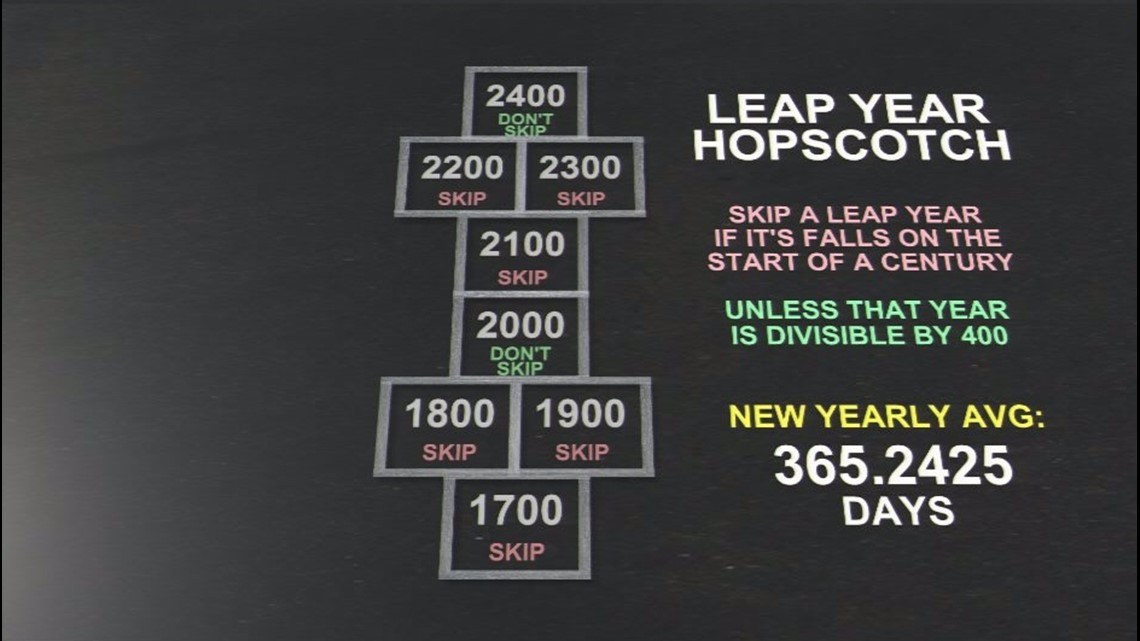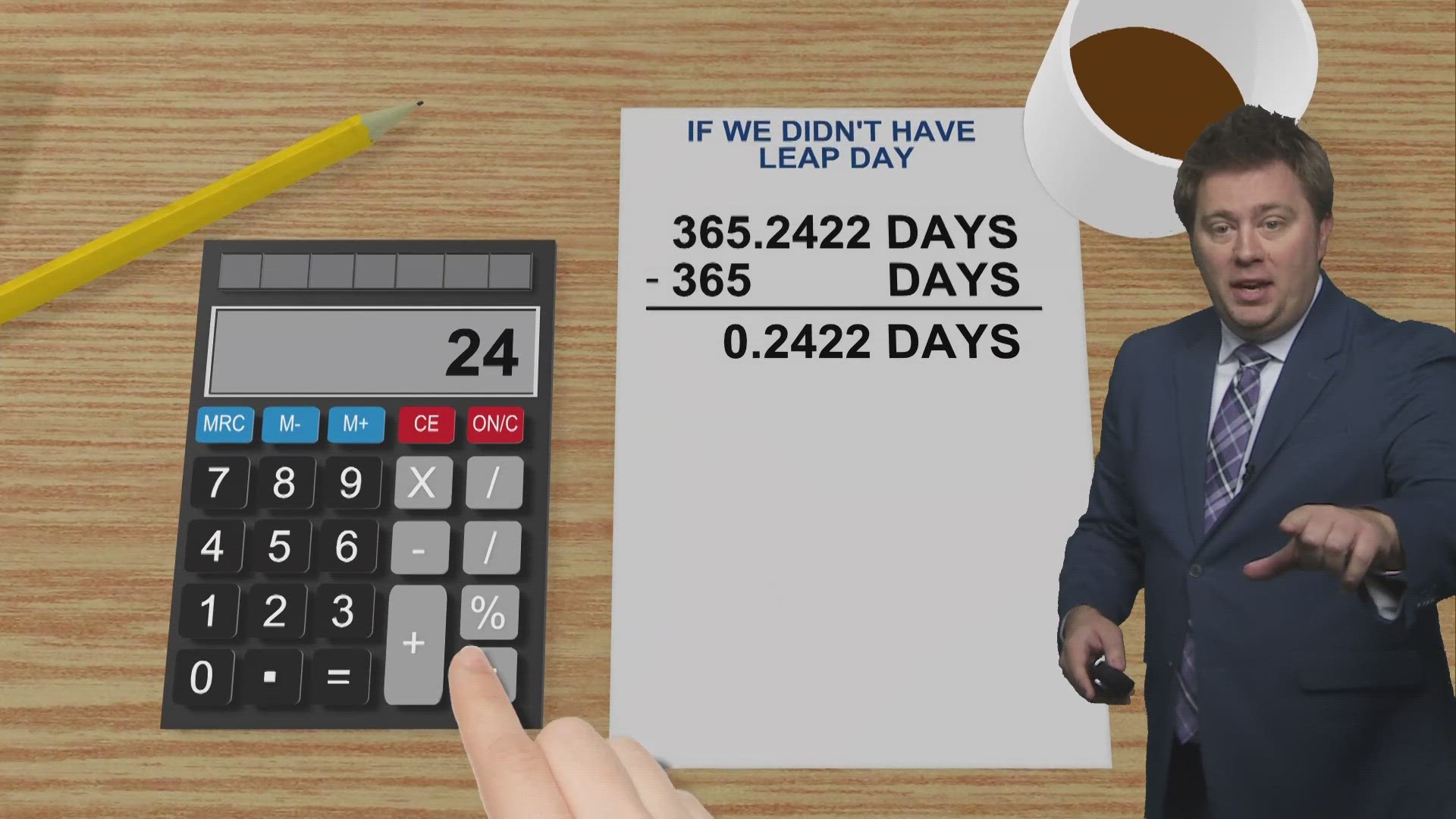TEMPLE, Texas — Every four years, we contend with an extra day popped into our calendars: Leap Day.
We've heard the question before: Why do we have to add an extra day? The answer: To make up for lost time.
We measure our years based on the Gregorian calendar, which is made up of 365 days. In reality, a year is the amount of time it takes Earth to make a full 360° revolution around the sun. As it turns out, that amount of time does not come out to quite 365 days. It's actually 365.2422 days.


The calculation of .2422 days comes out to about 5.8 hours each year that gets left off of our calendars. It doesn't sound like much, but after 100 years, that would equal a loss of 24 days. That means spring would start at the end of February, rather than at the end of March.


To account for this loss, every fourth year, we add Feb. 29. Problem solved, right?
Not exactly. Leap years get a little bit more complicated.
If we had a leap year every 4 years, we'd be off by about 11 minutes, on average, each year. This would cause a loss of 18 hours every 100 years.


To make up for that, scientists came up with the "Hopscotch Method". Using this method, Leap Days are removed from any calendar year that starts a new century (1700, 1800, 1900, etc.) unless that year is also divisible by 4. That's why we had a Leap Day in 2000.


This changes the loss to seconds each year. With this last adjustment, it would take 3,333 years to lose a single day.
A negligible difference, if ever there was one.
More from 6 News:

